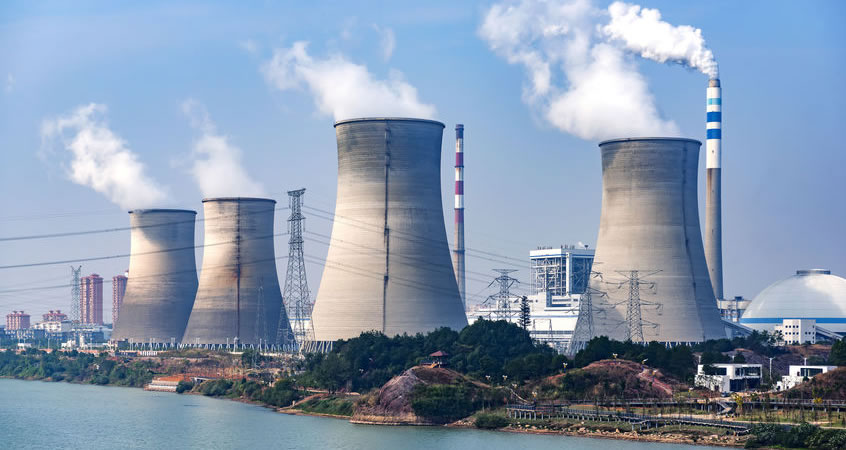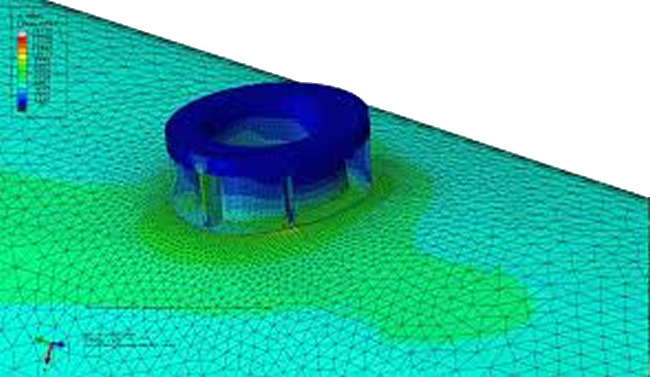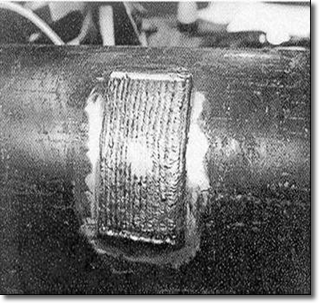Designing Elevated Temperature Equipment with Internal Pressure
If the behavior of discontinuity stresses due to pressure is not properly understood in elevated temperature design, unconservative designs can result. One particular issue with pressure stresses is the behavior of the discontinuity bending stresses.
An example of discontinuity stresses would be with a pipe welded to a flange. When pressured, the pipe will radially displace (balloon) Pr2/Et (neglecting longitudinal stress effects) and the radial displacement of the flange will be very much less than the pipe (considering the massive flange ring). Since they are welded together, the radial displacements must be the same where they are joined, that is, the pipe must be pulled in by the flange to mate. Looking at it as two steps, the pipe expands due to internal pressure, and is pulled back by the constraint of the flange which prevents the expansion where they are joined. This results in through-wall, discontinuity bending stresses in the pipe.
Historically, these stresses are considered deformation controlled, secondary stresses and as such are treated significantly differently that load controlled, primary stresses such as hoop stress due to internal pressure. In an elevated temperature regime, creep deformation causes secondary stresses to relax resulting in decrease of the stress over time. On the other hand, primary stresses in general do not relax over time (although they may redistribute).
In the mid-1980’s, when I worked for Exxon Research and Engineering, while trying to use simplified methods (elastic modulus reduction) to evaluate creep behavior of elevated temperature equipment, I was puzzled that I didn’t get relaxation of pressure induced discontinuity bending moments. To investigate further, I performed a number of creep analyses of typical components, and found that in general, these bending moments do not relax. Ultimately I characterized the behavior as creep followup. Considering the pipe to flange example, when the component is initially pressured, there is a discontinuity bending stress, which in the absence of anything else happening, would relax. However, there is a continuing differential radial creep rate which is in effect increasing the magnitude of the discontinuity over time. This is what prevents the discontinuity bending moment from relaxing. Note that there is some surface stress reduction due to redistribution of the bending stress through the wall thickness. To see what is happening, it is best to look at the bending moment itself.
I presented this at the ASME Boiler and Pressure Vessel Code Subgroup on Elevated Temperature Design in about 1985 (I don’t recall precisely). This was a very surprising observation as these stresses were generally considered to be secondary in elevated temperature design, but it was verified not long after based on ongoing creep test results (testing was being performed at Oak Ridge National Labs) of a pressured nozzle to sphere junction. I ended up joining that committee in 1992 and chairing it from 1994 to 2002. A paper documenting the analyses and observations, Behavior of Pressure Induced Discontinuity Stresses at Elevated Temperature was published in the ASME Journal of Pressure Vessel Technology, Vol 111, No. 3, 1989.
The bottom line is that discontinuity bending stresses due to internal pressure should be considered to be primary stresses unless proven otherwise for a particular component. Of course, if a full nonlinear creep analysis is performed, as described in an earlier blog on cyclone systems, then the actual behavior will be determined, and stresses do not need to be classified as primary or secondary.




